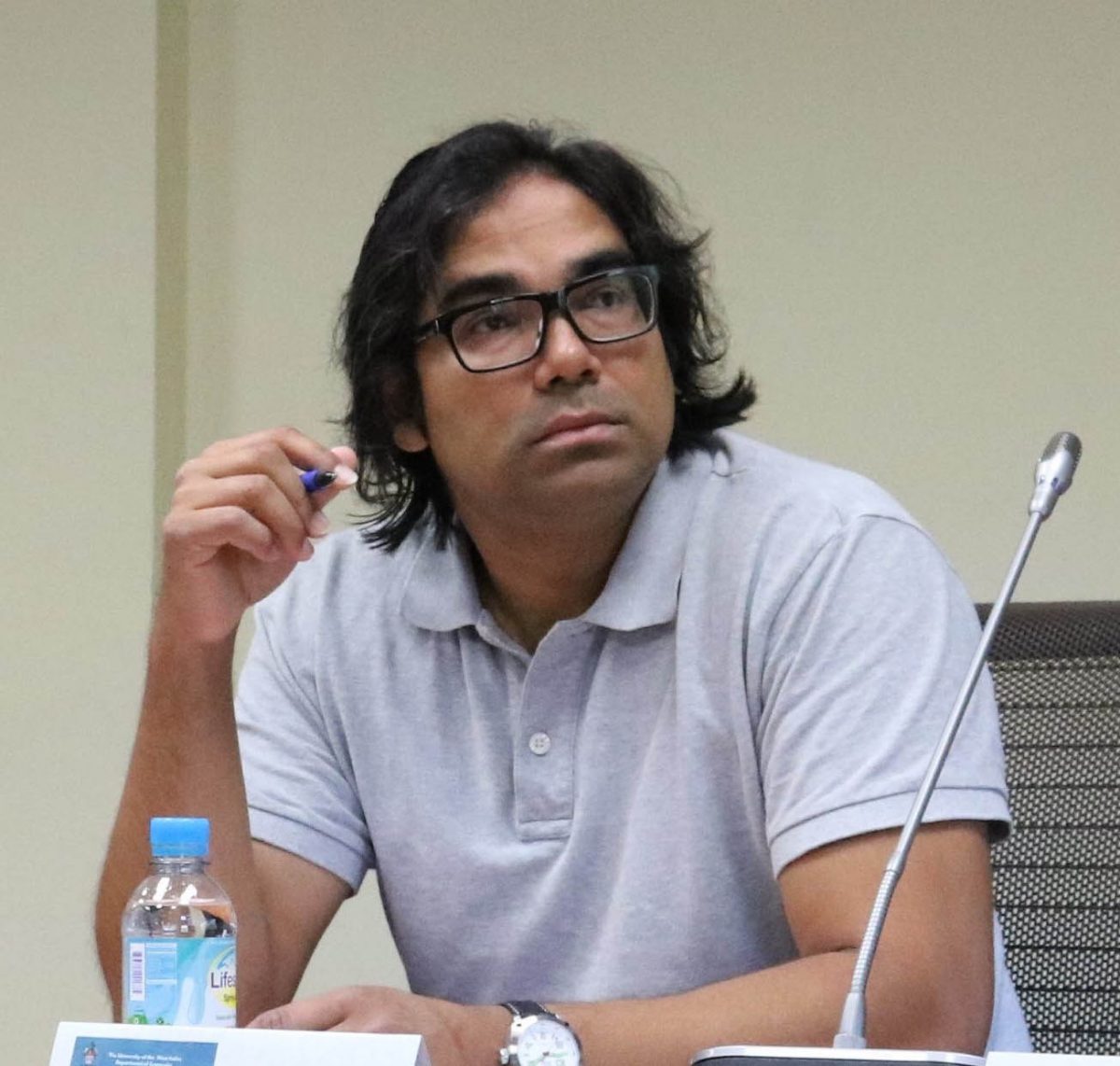Economist Tarron Khemraj has said that the government should use the oil money flowing into the country to finance the Amaila Falls Hydropower Project rather than employ the BOOT model which is being touted by the Ali administration.
In his last Sunday Stabroek column entitled `BOOT illusions and Amaila’, Khemraj said that the government was promoting the Build-Own-Operate-Transfer (BOOT) model for the project despite not now having a foreign exchange constraint on it.
Stating that the PPP/C governments pre-2015 and post-2020 have sold the BOOT arrangement as one where the government undertakes no risk or financial obligation, Khemraj’s retort was “If it sounds too good to be true, it is.”
Noting that government’s point man on the project, Winston Brassington disclosed that the new cost of the Amaila hydroelectric project is US$700 million Khemraj said “I find it hard to believe that cement, steel, aluminium and other materials used to make the power plant are cheaper today than the previous attempt back in 2013 when it was priced at US$860 million. But, I am not writing today to argue over my disbelief. The column intends to underscore some overzealous selling points in support of the BOOT financing method in light of the fortuitous oil rents”.
He pointed out that BOOT financing now has competition in the form of the Natural Resource Fund.
Giving what he said was a simple numerical example, Khemraj said “assume that the government has two options to fund a hypothetical project that costs US$100 million. It can seek BOOT financing for US$100 million. Or it can withdraw the same amount from the NRF to fund the project. Assume further that the BOOT financing attracts a repayment of US$130 million in interest over 10 years. Also, assume, that keeping the money in the NRF would have earned Guyana US$30 million after 10 years. From the numerical example, therefore, it clearly makes no sense to rely on the BOOT. Losing US$30 million in interest over 10 years is better than having to repay US$130 million after over 10 years”.
He said that a BOOT financial framework has some similarities to someone buying a coupon bond. The investor hands over an amount of money (the principal) to the borrower. The investor then expects a stream of annual coupon payments and at maturity the repayment of the principal that was initially provided.
In this instance, China Railway upfronts the cost to build the Amaila plant and it expects to be repaid by Guyana Power and Light (GPL) (hence, the Guyana government) over a 20-year period.
He noted that repayment takes the form of a power purchase agreement at a price of US$0.077 per kWh. GPL will then retail the power at US$0.15 kWh, thus making a profit for the government.
“Implicitly, therefore, it is Guyanese consumers who are going to bear the repayment cost of the project – as presently conceptualised. The mark-up between what China Rail gets and what the consumers pay for electricity can be seen as an implicit tax that refunds the project over 20 years. Nevertheless, if GPL indeed sells power for US$0.15 kWh, there is a welfare improvement for all Guyanese – regardless of whether it comes from a wind farm, Amaila or natural gas plants (the present price is about US$0.32 per kWh)”, he said.
He said that although the government does not fork out the initial amount to fund the project, it is responsible over the long-term for repaying the implicit external debt.
“The logic is simple: Amaila is a foreign currency liability that has to be funded over 20 years once the BOOT method is activated”, he said.
Exactly how much is repaid he said is quite interesting given recent news reports.
“Regardless of the fluctuations of the flow of river, GPL has to purchase the full capacity (165 MWh) at US$0.077 per kWh. In such a scenario, my back-of-the-envelope calculation tells me that the government makes an annual repayment of US$111.3 million per year for 20 years (US$2.2 billion). In present value terms – assuming an interest rate of 10% – the government repays US$947.3 million, which is not too shabby an investment for China Rail”, Khemraj wrote.
The government, he said, continues to sell BOOT-funded projects by noting a few favourable features.
“For example, after 20 years the Amaila hydroelectric dam – initially a liability or debt to Guyana – becomes an asset or is fully owned by government until it reaches 100 years. However, why not fund the project to make it a national asset from the very beginning if it is so important for energy security”, Khemraj asked. He noted that Guyana is expected to have over US$12 billion by 2030 in the NRF.
He said that the government should be commended for considering a portfolio of energy sources: natural gas, hydro, solar and wind and said that the Hope Beach wind farm appears to be a good opportunity with that investor hoping for the identical power purchase agreement of US$0.077 per kWh.
“While this essay focused on the purely financial terms, I still harbour much doubts about Amaila’s environmental merits. The 23 sq. km reservoir will release methane for years to come. Methane release from natural gas power plants are much easier to measure and control to 0% leaks. This is not the case for a flooded reservoir. I am not comfortable clearing virgin forests for running 270 km of transmission lines. The trees are much more valuable standing than making place for transmission lines that will likely use inferior building materials. As the climate continues to warm, places that were not susceptible to forest fires will become so, as a recent study indicates. Power transmission lines are a main source of forest fires in California”, Khemraj added.





